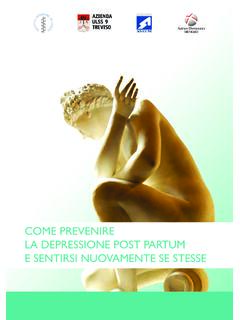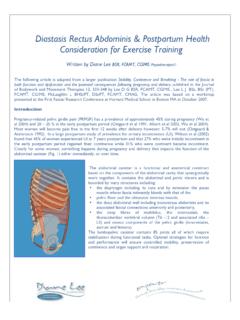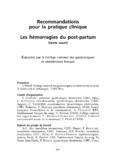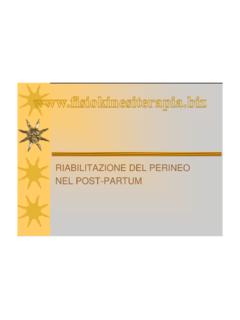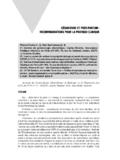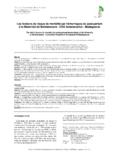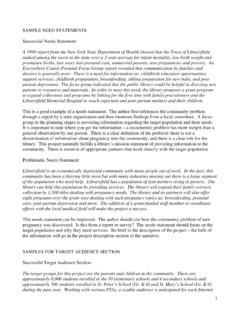Transcription of A LONGITUDINAL ANALYSIS OF CENTER OF …
1 A LONGITUDINAL ANALYSIS OF CENTER OF PRESSURE IN PREGNANT GAIT THROUGHOUT PREGNANCY AND post - partum Changfeng Li1, Yaodong Gu1, Guoqing Ruan 2, Li Yang2 Faculty of Sports Science, Ningbo University, Ningbo, China1 Human movement research Lab, Anta Sports Products Limited, Jinjiang, China2 The changes of physiological and morphological during pregnancy could lead to gait pattern s changes. The aim of this study was to ANALYSIS the variation of pregnancy gait balance. Sixteen healthy pregnant women by choosing were performed during the second and third trimesters and again post - partum .
2 Novel EMED was used for measuring the trajectory of the centre of pressure (COP). The results revealed that COP deviation distance (Dn) significantly increase in third trimester compared with post - partum during the initial contact phase (P= ). No differences were observed in the deviation distance of trimesters and post - partum during the forefoot push off phase. This method and results maybe have a new sight to reveal the dynamic stability with advanced pregnancy. KEY WORDS: pregnancy, gait, COP, balance INTRODUCTION: In the process of delivery, as volume and weight of uterus increasing, pregnant weight increases on the lower of trunk (Harris et al.)
3 , 2015), so pregnant females CENTER of gravity move up to keep balance (Branco et al., 2014). In addition, significant differences in lower extremity kinematics and kinetics during pregnancy (Foti et al., 2000; Huang et al., 2002). These factors affect the stability of pregnant women. The Biodex Balance System was used as evaluation dynamic postural stability, and the overall, anterior-posterior, medial-laterals stability index sores significant increases during third trimester (Inanir et al., 2014; El-Shamy et al., 2016). McCrory et al. (2010) concluded that initial sway and total sway were significantly less during pregnancy than non-pregnant women through analyzing COP movement.
4 There is less study that longitudinally research CENTER of pressure ANALYSIS of normal pregnant gait balance. Therefore, this research attempts to study the gait variation of pregnant women on CENTER of pressure trajectory. And we hypothesized that pregnancy has a negative effect on postural stability. METHODS: The experiment was approved by the local ethics committee. Sixteen healthy pregnant women (age of years and height of ) took part in this test during three stages, including the second trimester (21 gestational weeks and mass of ), third trimester (29 gestational weeks and mass of ) and 4months post - partum (mass of ), respectively.
5 All subjects have no injury or pain to lower limb or feet and foot deformation throughout the test process, which were excluded by gynecologists. Novel EMED (Novel GmbH, Munich, Germany, 42cm 30cm) was used for measuring the trajectory of the centre of pressure (COP). All subjects walked barefoot on a 10-meter walkway at preferred comfortable speed, with right leg landing on the force plate which was fixed in the middle of the walkway. To reduce the errors, each participant conducted 5 trials of walking in walkway. The foot was divided into ten anatomic areas, including first phalanx (FP), 2-5 or other phalanx (OP), first metatarsal (FM), second metatarsal (SM), third metatarsal (TM), fourth metatarsal (FM), fifth metatarsal (FFM), middle foot (MF), medial heel (MH), lateral heel (LH) (Fig.)
6 1-A). Figure 1: The illustration of anatomical parts (A), COP trajectory displacement (coordinate x & y) (B). The stance was divided into four phases with initial contact phase (ICP), forefoot contact phase (FFCP), foot flat phase (FFP), and forefoot push off phase (FFPOP), which included heel contact ground, metatarsal contact ground, forefoot complete contact ground, heel push off and forefoot push off consistent with previous studies (Mei et al., 2015). The COP displacement could be resolved into coordinate x and y, included constant coordinates (Cxn, Cyn) and averaged coordinates (Fxn, Fyn).
7 The deviation of COP trajectory, also D, thus could calculated with equation as follows: 22nn)( Fx-x DnnnFyCyC Due to the special physique changes of pregnancy in the follow-up test, data of four pregnant subjects was invalid and excluded. The remaining data of twelve subjects were utilized for statistical ANALYSIS with the SPSS (SPSS Inc., Chicago, IL, USA). The One-way ANALYSIS of Variance with post Hoc test was conducted to analyze the data. And the significance level was set at RESULTS: Figure 2. The COP trajectory of second trimester, third trimester and post - partum with great significance highlighted in the initial contact phase.
8 Table 1 The deviation (Dn) in four phase of stance (Mean SD). post - partum Second trimester Third trimester ICP * FFCP # * FFP # 1 & * FFPOP Note: * P , third trimester vs post - partum ; # P , second trimester vs post - partum ; & P , second trimester vs third trimester. As Fig. 2 shows, the COP curve goes from media heel to lateral heel in pregnancy and goes straight in post - partum . In addition, COP curve locates medial of foot in trimesters and locates lateral of foot in post - partum . The deviation distance (Dn) significantly increase in third trimester compared with post - partum during the ICP (P= ).
9 However, in the FFCP, the deviation (Dn) of second trimester and third decrease compared with post - partum (P= , P= ). There is significant increase in deviation (Dn) of second trimester compared with post - partum (P= ). Nevertheless, it was found a significant decrease in third trimester compared with second trimester (P= ) in FFP. No differences were observed in the deviation distance of trimesters and post - partum during the FFPOP (Table 1). DISCUSSION: This study aimed to analyze the balance of gait during pregnancy and post - partum period in a LONGITUDINAL perspective.
10 Yan et al. (2015) deduced the dynamics of body posture through using 20 sample points to accurately approximate the COP path and others sample points to calculate deviation of the actual COP. In our research, the dynamics of body posture inferred from Dn. This method that judge balance according to gait cycle combine gait cycle with body balance, and it can expatiate on the characteristic of gait balance during pregnancy. With Dn increasing, measures of dispersion of COP enlarging, which means the stability of body declined. We discovered that Dn obviously increase in the third trimester compared with post - partum , which means the stability of pregnant women declined (Table 1).
